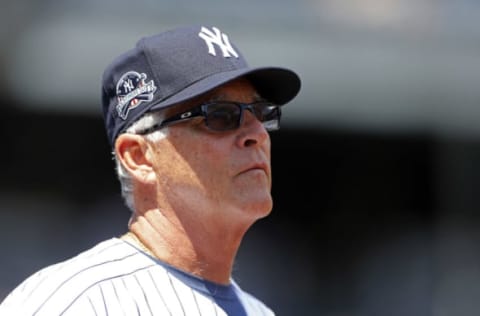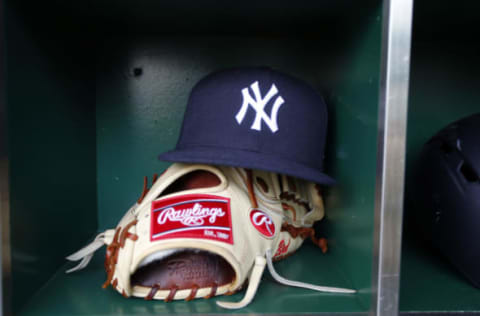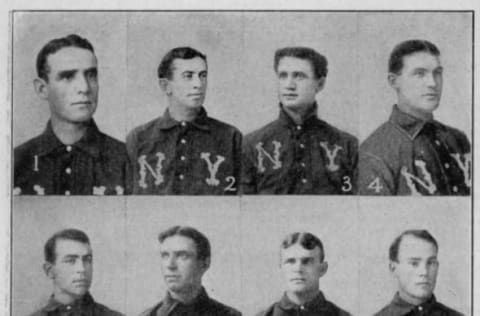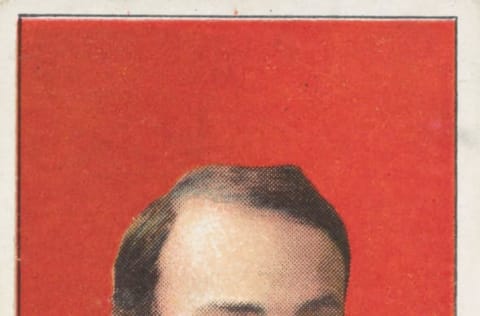Yankees History: The five worst Yankee managers of all time

Aaron Boone was hired in December 2017 as manager of the New York Yankees, the 33rd manager in franchise history. While some prior Yankee managers were fantastic and their memories will live on forever, others struggled as Yankee skippers.
This is the first of two essays where I critically evaluate the performance of previous Yankee managers dating back to the establishment of the New York Highlanders in 1903. In this piece, I focus on the five worst Yankee skippers.
In the second essay, I discuss the five best Yankee managers of all time. Since Aaron Boone is the current manager and doesn’t have a complete record to judge yet, he is excluded from the analysis.
As all baseball fans, and especially New York Yankees fans, are fully aware, managing a baseball club is an extremely challenging job. The manager is responsible for deciding who plays and who pitches, when someone gets up to bat, who plays where and the location of players on the field, what the starting rotation looks like, and who is the closer.
More Articles About Yankees All-time Lists:
manual
Like army generals on the battlefield, the strategies, tactics, and decisions of managers ultimately determine the success or failure of the team. Players are normally expected to perform well on the field.
Data analytics has now become a staple in the decision-making process of modern-day skippers. However, the human element has not been eliminated. Far from it.
Dealing with the psychology and social behavior of individual players is more challenging today than ever before for baseball managers, given the complexities of the sport, in particular, and the difficulties and temptations of life today, more generally.
In determining who is the worst Yankees’ managers of all time, I assess not only the regular season and postseason records of all 32 prior managers but also how well they handled their players game in and game out and year in and year out. Most previous evaluations only judge won-loss records during both the regular season and the postseason.
While judging team won-loss records is essential and cut and dry, I decided to include the extent to which previous Yankee managers made the right strategic decisions at crucial times in games and how they handled their players.
In other words, to what extent were players willing to fight, live, and die for their skippers on the battlefield? Among other problems, the least successful club managers were unable to instill in their players a “warrior, us against the world” mentality consistently over time.
Based on the regular season and postseason of past managers of the Bronx Bombers, along with my assessment of their leadership during their tenure, these five managers stunk up the place and are by far the club’s most horrible managers in Yankee history. The list runs from bad to worst.

5. Bucky Dent
Of course, Dent is best known for his tie-breaking, three-run home run against the dreaded Boston Red Sox at Fenway Park in the seventh inning to end the 1978 regular season. The Yanks eventually won the game 5-4. This was certainly one of the happiest days for all Yankee fans, including me.
The Yanks went on to win the World Series against the Los Angeles Dodgers in six games. The normally light-hitting Dent (he regularly batted ninth for the Bombers) also was selected MVP for the Series after batting .417 (10-24) and driving in seven valuable runs.
George Steinbrenner hired Dent as a stopgap after firing the blunt and outspoken Dallas Green in August 1989 for calling Steinbrenner, “Manager George.” Steinbrenner didn’t believe Dent could lead the Yanks back to the postseason. He initially intended to replace Dent after the season was over with Billy Martin for the 1990 season, but Martin died in an automobile accident on Christmas Day in 1989.
Despite Dent’s best efforts, the Bombers played very poorly at the beginning of the 1990 season. The mercurial Steinbrenner quickly lost his patience and fired Dent in, ironically, Fenway Park 49 games into the season (Dent was 18-31). The owner was skewered in the media for his nasty and shameful treatment of Dent, and deservedly so.
All and all, Dent generally had losing records when he managed in the minors, and, likewise, he finished his brief managerial stint with the Yanks, 36-53 (.404), one the worst records of any Yankee manager in history.

4. Carl Harrison “Stump” Merrill
Stump Merrill replaced Bucky Dent in June 1990. The Bombers were 49-64 under Merrill and 67-95 overall. The club finished last in the American League, and it had the second-worst record in MLB. He was brought back the following year, but the Yanks finished only 71-91. Altogether, he had a .436 won-lost record as the Yankee skipper. As a consequence, Merrill was fired after the season was over. In essence, he picked up where Dent had left off and was unable to turn things around.

3. Johnny Keane
Keane never played in the major leagues. In 1964 he led the St. Louis Cardinals to the World Series where they beat the Yanks in seven games. Watching the Cardinals play that year, I thought that he did a brilliant job managing them during the regular season and the postseason.
For some unexplained reason, Keane resigned immediately after the Redbirds beat the Yanks in the World Series. He then signed to be the manager of the Yanks five days later. At the time, I (and many others) thought this was a coup for the Bombers. He replaced Ralph Houk, who was considered to be a player’s manager.
In 1965 Keane guided the Yankees to a 77-85 record (.475), the team’s first losing season in 40 years. In 1966 Keane and the Yanks lost 16 of their first 20 games. A very bad start, and he was fired immediately. This was the first time in the history of the club that a manager was dismissed in midseason since 1910. Ironically, he was replaced by Ralph Houk.
Keane had an aloof, distant manner, and he was in awe of the Yankees culture and dynasty. In the book, I Managed Good, But Boy Did They Play Bad, Jim Bouton writes that Keane underestimated the problems the team faced at the time, especially the challenge of overseeing an aging veteran team.
In the book, Ball Four Bouton writes that Keane was prone to panic and lose control during crucial parts of games. During one game Keane strongly pressured Mickey Mantle to play on a severely injured leg. Mantle finally told him that he was in too much pain and couldn’t play.
Not exactly a player’s manager. Score one point for those who argue one should play in the major league before one manages in the major league. Keane finished with an overall record of 81-101 as the Yankee skipper (.445).

2. Harry Wolverton
Harry Sterling Wolverton played in MLB between 1898 and 1905 for multiple teams, and in 1912 as a player-manager for the New York Highlanders, the precursor to the New York Yankees. During the early years of MLB, it was not unusual for individuals to be a player and a manager at the same time.
“Fighting Harry” replaced Hal Chase as player-manager and led the Highlanders to a last-place finish and a dismal 50-102 record (a .329 winning percentage). (He sometimes inserted himself in games as a pinch hitter, and he batted .300 during the season.)
He often fought with club owners over the low salaries his players received, which created a lot of tension on the team. He was let go by owner Frank Farrell after the conclusion of the 1912 season because of his behavior and poor performance as the Highlander’s skipper. Subsequent managerial stints led to similar outcomes.

1. Kid Elberfeld
Norman Arthur “Kid” Elberfeld played for several teams in the late 1800s and early 1900s, including the New York Highlanders between 1903 and 1909. In 1907 he stole home twice in the same game, the first American League player to accomplish that feat.
In June 1908, New York Highlanders Manager Clark Griffith resigned, and Elberfeld took over as the player-manager. The club finished the season, Elberfeld’s only season as an MLB manager, in last place with a horrible 27-71 record (and an awful .276 winning percentage).
Elberfeld was a true throwback to the way baseball used to be played. He had a fiery temper and was nicknamed “The Tobasco Kid.” He was well-known for his vicious verbal, and occasionally physical, assaults on umpires. He also injured numerous players by always sliding into second base with his spikes high.
While a minor leaguer, he once shoved mud into an umpire’s open mouth. Later in his career, he assaulted another umpire and had to be forcibly removed from the game by police. He was thrown out of major league games 22 times as a player, and 4 times during the year he managed the Highlanders.
Interestingly, while in the minor leagues at the end of his career, Elberfeld took a very young Casey Stengel under his wing and mentored him. He and Stengel sat together on trains, roomed together in hotels, ate together in restaurants, shared thoughts on the bench, and spoke for hours about baseball. When Stengel was called up to play for the Brooklyn Robins, Elberfeld threw a farewell party for Stengel and walked him to the train station at the end of the night to send him off.
Yankees: 8 players unable to live up to the hype. dark. Next
While the Yanks have had several bad managers in their history, the club has been extremely fortunate to have had many more great managers. My next essay shines a bright light on the top five Yankee skippers of all time.